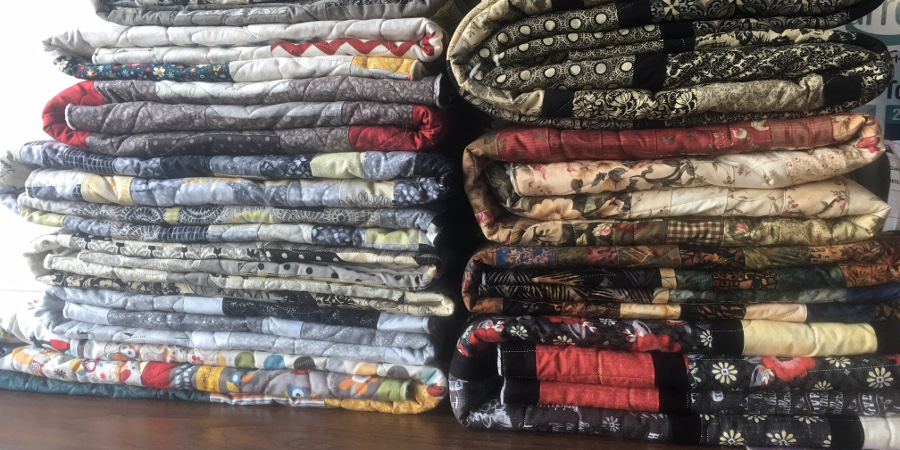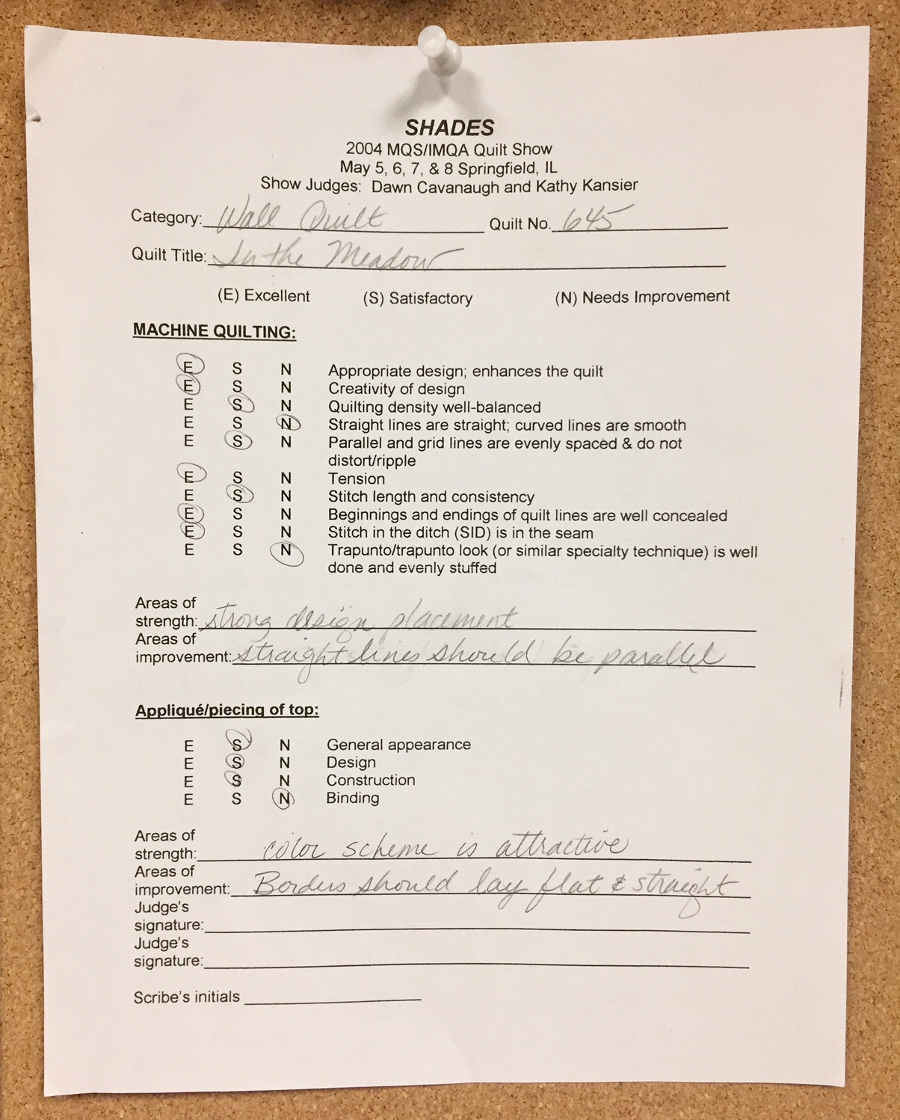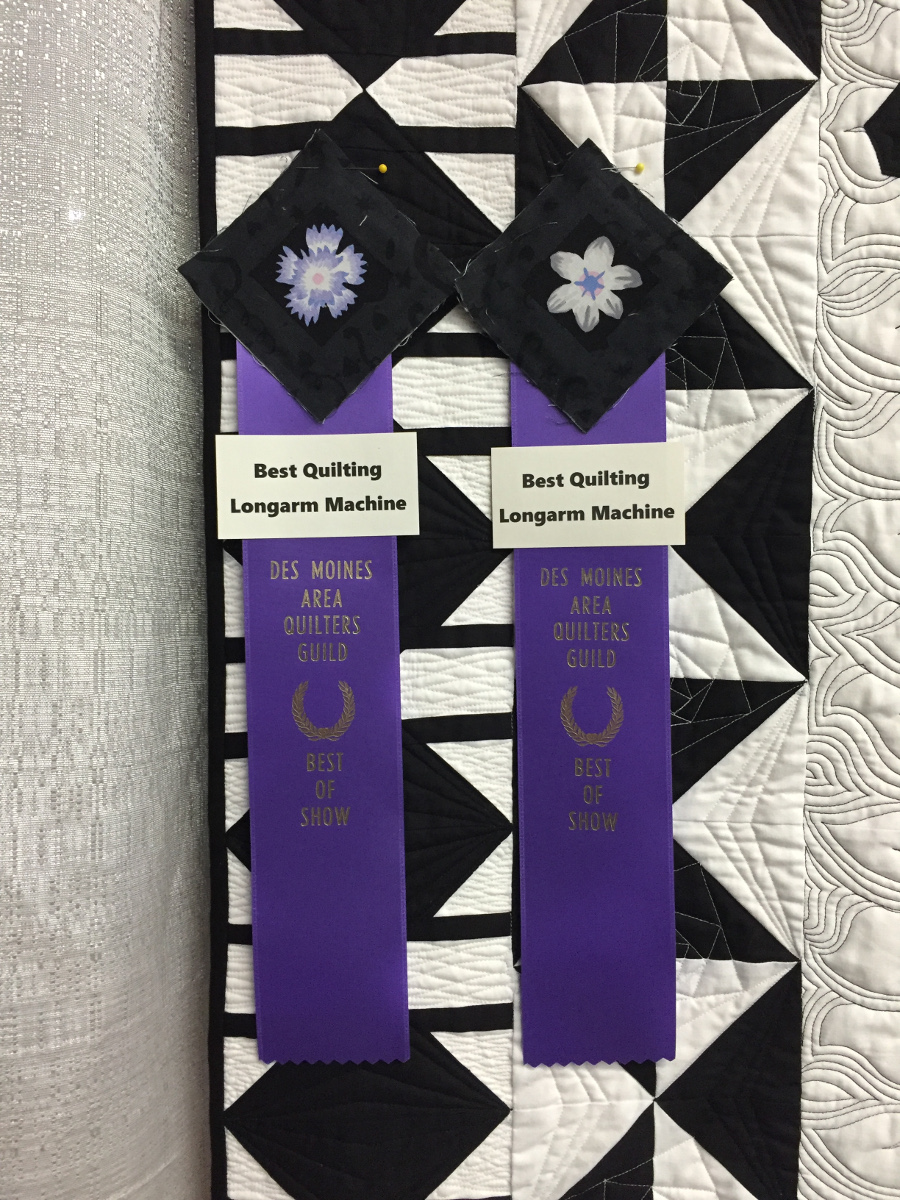Quilt shows – a primer on the people involved
Editor’s Note: This is the third article in our series about quilt judge expectations and solutions to the most commonly cited areas for improvement. If you haven’t read the first and second articles, we encourage you to do so!
Sending your child off to college can be very emotional for a parent! We quilters go through those exact same emotions when our beloved quilt heads off to a show for the first time. We send our precious “baby” off to strangers, trusting that they will take care of our quilt as if it was their very own. We hope the quilt can “measure up” to the competition, and we wait for the final “grade” to come back that tells us how we did—all the while hoping that our quilt is at the top of the class!
Our first article about Quilt Shows provided an overview of judges’ expectations, and the second installment showed you how to make sure your quilt arrives clean and “show ready”. To help you learn more about what will happen to your quilt once it leaves home, consider this your “freshman orientation” for entering a quilt show!
This article introduces you to the people who will touch your quilt while it’s at the show, but nothing beats firsthand experience! If given the opportunity to volunteer for one of these jobs at your local show, pounce on it! You’ll be surprised at what you learn!
Receiver/Shipper
This person is in charge of physically receiving the quilt entries (and is typically also in charge of returning quilts at the show’s end). This includes shipped quilts as well as those which are hand-delivered to the venue. This person coordinates shipping details, communicates with contestants, handles damaged or missing shipment claims, and ensures that the quilts are safely transported to the judging venue. The Receiver must be responsible, very organized, and may work with a larger committee.

Quilt Sorter
Once all the quilts arrive and are accounted for, someone must separate the entries into their respective categories for judging. The sorter and her team labels the quilts for judging while also ensuring that any labels that identify the quilter’s identity are sufficiently covered.
The sorter may also have the responsibility of ensuring that the quilt meets the criteria for the category in which it was entered. If there is a question, then the show sponsor/chair may elect to move a quilt to a different category (or disqualify it). Or the decision may be left up to the quilt judge.
Judging Coordinator
Depending on the size of the show, the judging coordinator may wear many hats, but this person typically oversees the entire judging process, including managing the team of volunteers working as folders, fanners, scribes or aides. The coordinator serves as a liaison for the quilt judges if questions or issues arise during judging. The judging coordinator may be responsible notifying winners, distributing prizes, etc. The coordinator may also work closely with the quilt hanging chair and quilt photographer.
Scribe
Though technology now allows judging comments to be recorded electronically, most shows still use human scribes to document the judging comments. Scribes must be very good listeners, good spellers, be fast writers but also must have good penmanship! Scribes must write down phrases exactly as a judge presents them, without paraphrasing.
This does not mean the scribe cannot ask for clarification, but the scribe must be careful to be impartial and not put words into the judge’s mouth. Scribes must also be able to keep a secret, as they will be privy to the judging comments and decisions well before the results are released publicly. A show will typically have two or more scribes per judge to reduce fatigue and improve accuracy.

Fanner
To prepare a category for judging, quilts are typically fully opened up and then stacked on top of each other on a large table like a stack of pancakes. Ideally quilt judges would love to see all the quilts spread out single file around the room so that they can get an idea of the category’s theme and see what the competition is like within the category. But physical space and the number of quilts in a category make that impractical.
Instead, the judges stand at one end of the table with the quilt stack in front of them. Two volunteers (wearing white gloves and with strong arms) stand at the opposite end. These “fanners” grab the top two corners of the first quilt an hold up its top half for the judges to see for a few seconds. Then they fold it in half by bringing the top two corners down to the bottom. Next they grab the corners of the second quilt in the stack, hold up its top half, and then fold it over the first quilt like a folded newspaper. The fanners continue this way until they reach the bottom of the pile, then they work in reverse order to open the quilts back up flat again. Finally, the fanners step aside and say nothing while the judges go to work. Fanners must also be able to keep a secret as they stay in the room during the judging process.
Folder
Fanners may also be folders if the volunteer staff is small. Folders stay in the judging room and listen quietly while a quilt is judged. Once the judges have completed their evaluation, they will either “hold” a quilt or “release” it. If a quilt is still in contention for an award in a category, the judges “hold” it for further scrutiny once the entire category is judged. Folders remove the quilt from the stack and set it aside for more review. The quilt is “released” if the judges feel it will not qualify for an award. Then the folders remove the quilt and carefully fold it up to be returned to the quilt hanging committee.
Once a category is judged, the folders and fanners then work together and hold up the quilts the judges held back for prize consideration. After the awards are determined the folders move the winners out of the way while the fanners and judges move on to the next category.

Quilt Hanger
A quilt show can’t happen without a small army of volunteers who are willing to climb ladders and do lots of walking and stretching as they hang quilts for the show. These volunteers also wear white gloves to protect the quilts, and ensure that the quilt will not become soiled by touching the floor or getting stepped on. Quilt hangers may also be responsible for adding signage to each quilt that identifies the maker to the show attendees.
That’s an overview of the people who are typically involved in making quilt shows a success. If you’ve been involved with judging and have other roles to add, please share in the comments below!



